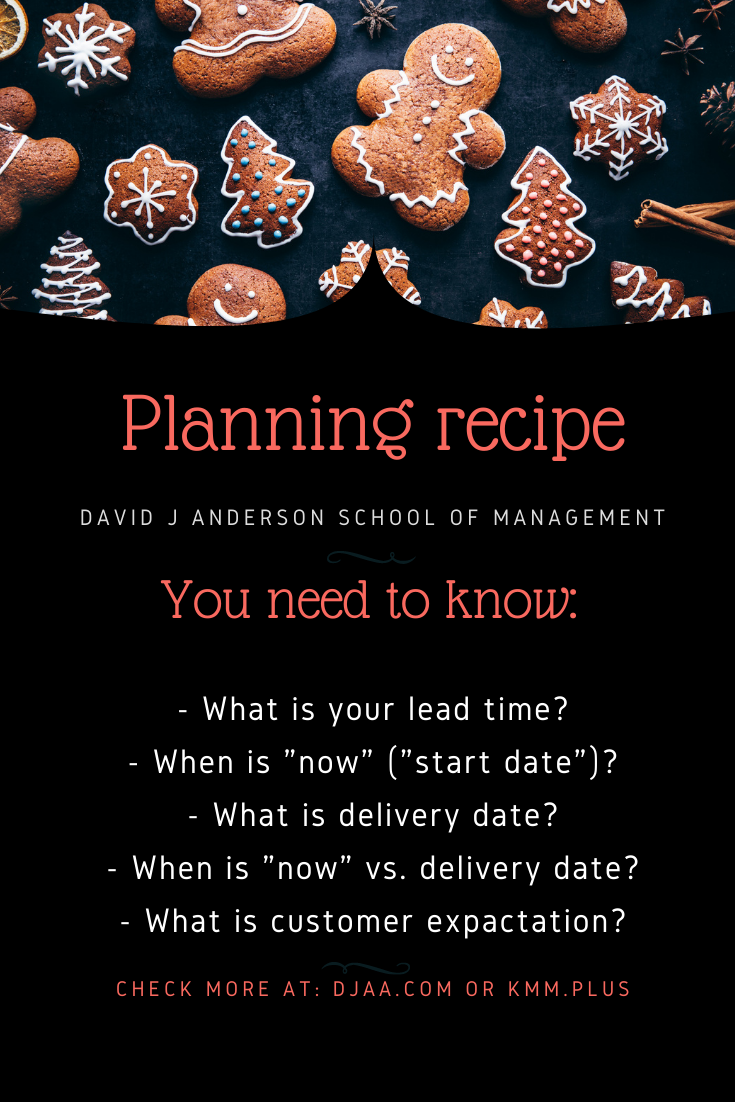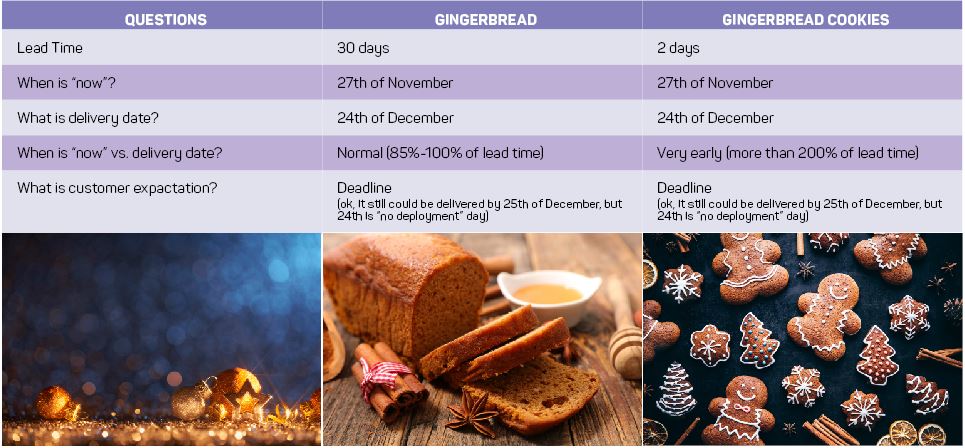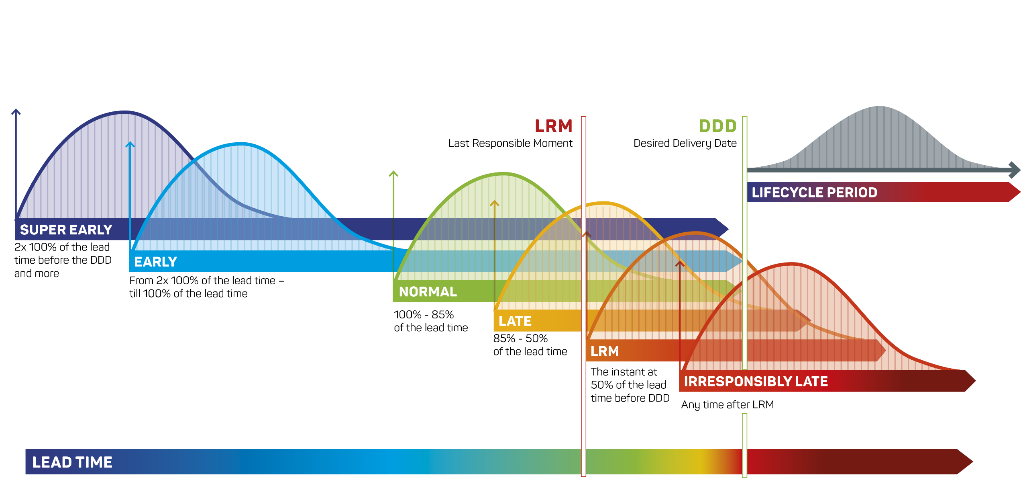December. Here we go again!
The best scheduled, the most organized month each year, where end success is dependent on proper planning and preparation time. Sounds like bread and butter to you? Great, let’s talk about bread. Gingerbread.
And cookies!
The Question
One of the questions I hear most often is: “So, when should this be delivered?”. Don’t ever ask this again!
Instead, ask yourself and others: “When should we start in order to deliver on time?”.
Don’t ask: “When should it be delivered?”
Ask: “When do we need to start in order to deliver on time?”
The change may sound trivial or insignificant even, but it helps you focus on what is important in planning and considers the non-homogenous nature of our work.
The Recipe
Let’s start with the planning recipe:

In Poland, we prepare (among others) two types of gingerbread: the big one looking like real bread and cookies.
Now we will use our recipe to prepare for planning:

What this example tells us is that delivery date is important but is not the one and only component of good planning. What is missing most often is information about lead time and how late (or not?) you are when comparing your lead time to the time span from “now” to the delivery date.
This chart helps in better understanding the start dates ranges:

How can I use it?
- We can clearly see that there is almost no customer tolerance in terms of delivery date. Which means that if I miss the date, the next delivery opportunity for me will be next year.
- If it’s late November and I haven’t started working on my gingerbread yet – it’s high time! It’s still “normal” range, but I’m balancing dangerously on the “late” edge, when I am required to increase an urgency of my work (to either Fixed date or even Expedite). This is the situation we don’t like as it requires very strict dependency management (for Fixed Date items) and leaves actually no space for mistakes.
- If I wait with my gingerbread any longer, it will make no sense to even start doing it (anyone who prepared full month-maturing gingerbread knows what I mean).
- On the other hand, the lead time of my gingerbread cookies is only 2 days. You can start eating them right after taking them out of the oven. The lead time distribution is very thin tailed (it just takes two days to prepare them: one day for preparing the dough, one day for baking and decorating). Which means that in the end of November I’m still in a “super early” start date range. But now the whole world of opportunities opens for me. I can:
- Prepare the dough and let it rest until I have time for baking and decorating.
- Bake the cookies but decorate them later.
- Do everything and put them in the box.
- Wait until “just-before-normal” and do them in two days.
- Bake cookies early and let customers (friends and family) eat them to realize there is nothing left for the Christmas, but… there is still time to prepare a new batch 😊
Why is it important?
Knowing “when to start to deliver on time” supports not only good planning decisions but also helps you with:
- Decreasing the number of “late” items delivered in rush
- Improving work quality – you have time focus on it (e.g., how to beautifully decorate your cookies)
- Escaping defects
- Avoiding multitasking and quality issues resulting from multitasking (when I try to bake, decorate, and do dozens of other things the same time, 50% of cookies will be burned)
- Satisfying your customers with timely delivery (or delivering earlier if it’s not overserving!)
- Avoiding last-minute deployments, overtime, and late shifts (who wants to bake on Christmas Eve or the night before?)
- Giving you confidence in decisions made and time to adjust to changing situation.



